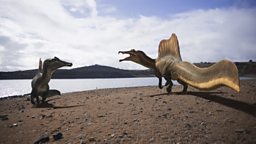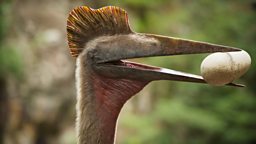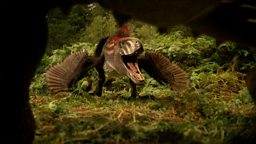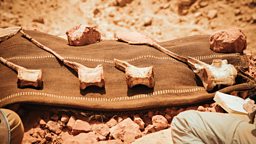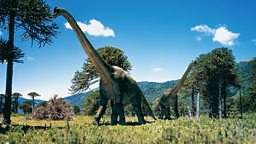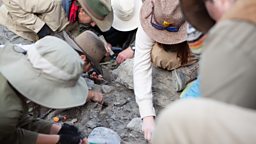Dino guide: Creating Spinosaurus
by Jay Balamurugan, series assistant producer
Longer and taller than a double-decker bus, with a narrow crocodilian snout, a giant sail on its back, and a paddle-like tail, Spinosaurus is one of the most mysterious, most bizarre, and most impressive dinosaurs to walk the Earth – and it’s my personal favourite. I’ve even got its skull tattooed on my arm!
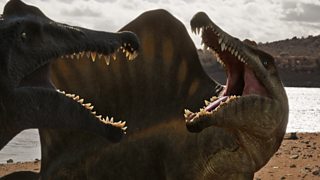
This enigmatic beast was one of the most interesting ones to bring to life in VFX. Not only were we working with limited fossil material (the original Spinosaurus skeleton was destroyed during World War II), but the fossil material we did have was so unusual that we found ourselves surprised at every step of the design process.
Working closely with the palaeontologists studying the specimen featured in The River Dragon – known as Sobek – we learned that Spinosaurus had some remarkably odd proportions. It had a long, slender neck and torso, large arms, relatively tiny legs, and a thick tail over 6 metres long. Once the VFX model was built, our first dilemma became apparent. How did this thing stay upright?
To figure out how this oddball walked, we first worked with dinosaur anatomy expert and series consultant Scott Hartman, who walked us through various biomechanical and musculature models, which showed how the massive tails of two-legged dinosaurs were effective counterbalances while also housing important muscles. These muscles, running from the thigh down the tail, are especially important in providing propulsive power for the legs. Scott also pointed out that from known predatory dinosaur trackways, we knew that these animals walked with their feet close together, almost as if walking on a tightrope. This kept their long, heavy bodies balanced while moving – and is similar to what modern dinosaurs, birds, do.
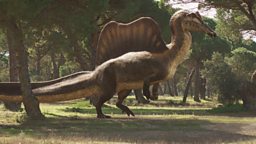
And so, our next step was to look at bird movement. More specifically, we looked at waterbirds, many of which had long necks and bodies, as well as short legs with webbed feet, like Spinosaurus. Ducks especially were of interest, and if you’ve ever watched one waddle around in your local park, you can immediately see why. To keep themselves balanced, they keep their feet close together, tilt their entire bodies upwards, and curl their necks in. Once the VFX team posed our Spinosaurus in this way, it suddenly made sense how it could walk around on land!
a remarkable, bizarre, majestic animal, unlike any other
Now it could walk, our Spinosaurus had to do something else equally important – it had to swim. Palaeontologist Nizar Ibrahim has been studying Spinosaurus for over a decade, and as he says in the film, ‘The more we collect, the more aquatic this thing becomes.’ Though scientists continue to debate as to just how water-loving Spinosaurus was, most agree that this was an animal that spent considerable time in and around the vast rivers of the ancient Sahara.
For Spinosaurus to take the dive, we needed to figure out exactly how it would propel its multi-tonne bulk through the water convincingly. Once again, modern animals were a great source of information. Not only did we again turn to water birds for how they used their webbed feet while swimming, this time we looked at our modern-day giant reptiles – crocodiles. The VFX team closely modelled the swishing, powerful tail of our swimming Spinosaurus on that of crocodiles – which worked to convey just how much muscle and strength went into moving its huge body through the rivers. Our Spinosaurus may not have been zipping down the waterways like a shark, but it was swimming slowly and purposefully until it spotted its prey, at which point it would lunge forward with a burst of unexpected speed.
Finally we were able to bring our River Dragon to life – a remarkable, bizarre, majestic animal, unlike any other.
